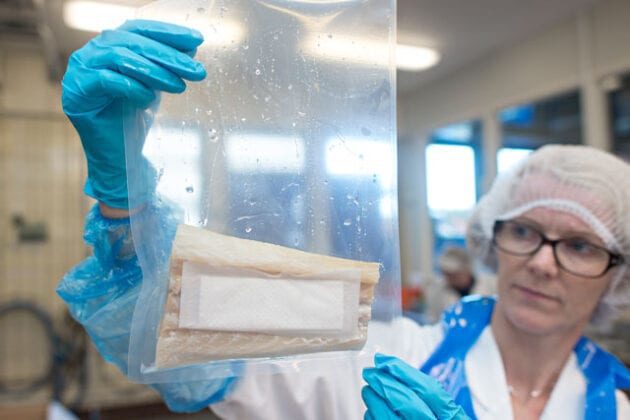5 things you should know about plastic

There is a lot of confusion around terms in the debate on plastic. People often equate plastic with packaging, and bioplastics with recyclable or degradable plastics. Here we will try to clear up some of the confusion.
Worth knowing
Everyone is against marine littering and plastic in the oceans. Some go so far as to call for a ban on using plastics, while others have ambitions for plastic-free cities and a plastic-free countryside. Some want to make the use of bioplastics mandatory, while others believe degradable plastics are the solution.
But what exactly is the difference between these? And what would it take to prevent plastics from winding up in the ocean? Here are five things you should know about plastic.
What is plastic?
Plastic might be the most universally applicable product created by humans. Scientifically speaking, it is a common term for a variety of synthetic materials made by polymerizing organic building blocks into long chains.
The word ‘plastic’ refers to the material’s plasticity – its shape can be changed without destroying it.
Plastics are often better, lighter and cheaper than alternative solutions in wood, metal or glass, and can be given properties which are impossible to give other materials.
Polyamide (nylon) and polyester revolutionized the textile industry back in the day, and by reinforcing polyester with fiberglass, for example, it became much easier to manufacture lighter and more energy-efficient boats and cars.
Even the most passionate opponents to plastics will find countless polymeric plastic materials in their home, such as insulation materials, flooring, table tops, pipes and wires, in most electrical appliances, their all-weather jacket and their Teflon pan – often without even being aware of the fact that these are all plastic materials.
Up to 20% of any modern car is made from plastic. Much of the food you buy is wrapped in plastic or has plastic as the material that is in contact with the food. Even your juice and milk cartons, beer cans and tinned food are lined with plastic.
In fact, even products supplied in glass containers usually come with a lid which has an inside coating of a plastic-based material.
How does plastic turn into microplastics?
Plastics degrade very slowly, but if they wind up in the ocean, the impact of weather, winds and UV radiation will cause them to gradually disintegrate into smaller and smaller particles until they eventually become microplastics.
According to the Norwegian Environment Agency, the main sources of microplastics are the wearing down of car tyres, paints and rubber granules from artificial grass. However, textiles, cosmetics and plastic production processes also play a part.
What exactly are bioplastics?
Bioplastics are quite similar to regular plastics and has identical characteristics. However, while regular plastic is made from oil and gas from fossil sources, bioplastics are made from renewable raw materials such as corn or sugar cane. Sugar, for example, can be fermented into ethanol, and then converted to ethylene and polymerized into polyethylene, which is the most common type of plastic we have.
When a company advertises that their product is made from X% bioplastic, the plastic quality is just as good or bad as conventional plastic. And when soft drink manufacturers advertise their “plant bottle” which contains up to 30% plant-based PET, this PET has the same functionality as “regular” PET (polyethylene terephthalate).
Bioplastics take just as long to decompose in nature, and must be collected and undergo the same amount of processing as conventional plastics. They can be made from recyclable resources and be included in the usual plastic recycling schemes.
This means that bioplastics do not solve the problem of littering and microplastics in the ocean, but they lead to a reduction in the use of fossil fuels as raw materials.
The main challenge with bioplastics is that we do not have the land area required to produce sufficient quantities of bioplastics to replace fossil raw materials without drastically compromising food production.
In a world where many have insufficient access to food, one may ask if the production of bioplastics is a good use of valuable agricultural land. However, more sustainable future solutions may perhaps be based on producing raw materials for bioplastics from the sea or forests, from by-products and residual biomass or by improving the utilisation of existing spaces through vertical agriculture.
What, then, is degradable plastic?
There has been a lot of focus on developing degradable plastics over the past decade. PLA (polymerized lactic acid) dominates the market currently, but several starch-based thermoplastics and varieties of the polyester PHA (polyhydroxyalkanoate) are also available.
However, these materials should not degrade so easily that they lose their functionality (start decomposing) before they are discarded after use.
This means that the vast majority of these plastic materials are only degradable through industrial composting with high levels of heat and humidity, but will not decompose quickly in nature or in the sea.
Another challenge is that these plastic types do not have the same mechanical properties as regular plastics, so they have only limited applications. They are currently not suitable for heat treatment or gas packaging, and also have limitations when it comes to heat sealing.
They cannot be included in the regular recycling schemes for plastics, but must be separated for composting, which means adequate labelling schemes must be implemented to enable consumers and sorting facilities to easily separate conventional and degradable plastics.
Are plastic and packaging the same thing?
People often equate plastic with packaging, which is not so strange considering that nearly a 1/3 of today’s plastic production is used for packaging and other single-use plastic products.
We could reduce this amount by moving away from using plastic for straws, disposable cups and cutlery, outer packaging, combined packaging, shopping bags, freezer bags and so on – if consumers are willing to accept the extra cost.
We already see that the grocery sector, industrial sector and politicians are taking action.
But should plastic packaging, which is there to protect food products and provide longer shelf life and ensure better food safety, be our main focus in our efforts to reduce plastic use?
Longer shelf life of food is positive – it causes less wastage, simplifies distribution and ensures more sustainable products. Good plastic packaging solutions can often be more environmentally friendly than the alternative.
Is there a solution to marine littering?
No matter what progress is made in the development of new plastics or reducing plastic use, the plastic must be collected and included in effective recycling schemes, and not end up in the sea.
In Norway we’ve become quite adept at sorting different materials from our garbage, but that has not always been the case. Not too long ago, all our waste went into landfills, and the ocean was considered a great place for dumping garbage.
Many of the recycling schemes and materials companies in Norway were first established in the 1990s, and in many parts of the world they are still where we were a few decades ago.
Marine littering is a global problem, but it is how we treat the plastic that is the problem, not the plastic itself.
Eight rivers in Asia as well as the Nile and Niger in Africa contribute to 88-95% of global marine plastic littering, so that might be where our efforts need to be intensified (Schmidt et al., Environ. Sci. Technol., 2017, 51(21)12246–12253).
Plastic in the ocean is bad, but it is important for food preservation. That is why Nofima is researching how we can reduce plastic use through using less plastic in food packaging, facilitate increased reuse and minimizing food waste.
A version of this text was first published in the magazine “Matindustrien” in August 2018.
Contact person
Research areas
